Fireplaces have long held a special place in our homes, offering warmth, comfort, and a focal point for gathering. Yet, beyond their cozy ambience, fireplaces are intricate structures composed of various components, parts of a fireplace serving a specific function in the operation and aesthetics of the hearth.
Whether you’re a homeowner looking to understand your fireplace better or intrigued by the mechanics behind this timeless feature, delving into the anatomy of a fireplace unveils a fascinating world of design and functionality. So, what are the parts of a fireplace called, and what are the essential components of a fireplace?
Here’s What the Parts of a Fireplace are Called
- Foundation of A Fireplace
- Ash Pit
- Fresh Air Intake
- Fire Box
- Lintel
- Firestop Insul
- Fireback
- Smoke Shelf
- Damper
- Parge Brick at Smoke Chamber
- Brick Infill
- Clay Flu Liner
- Chimney
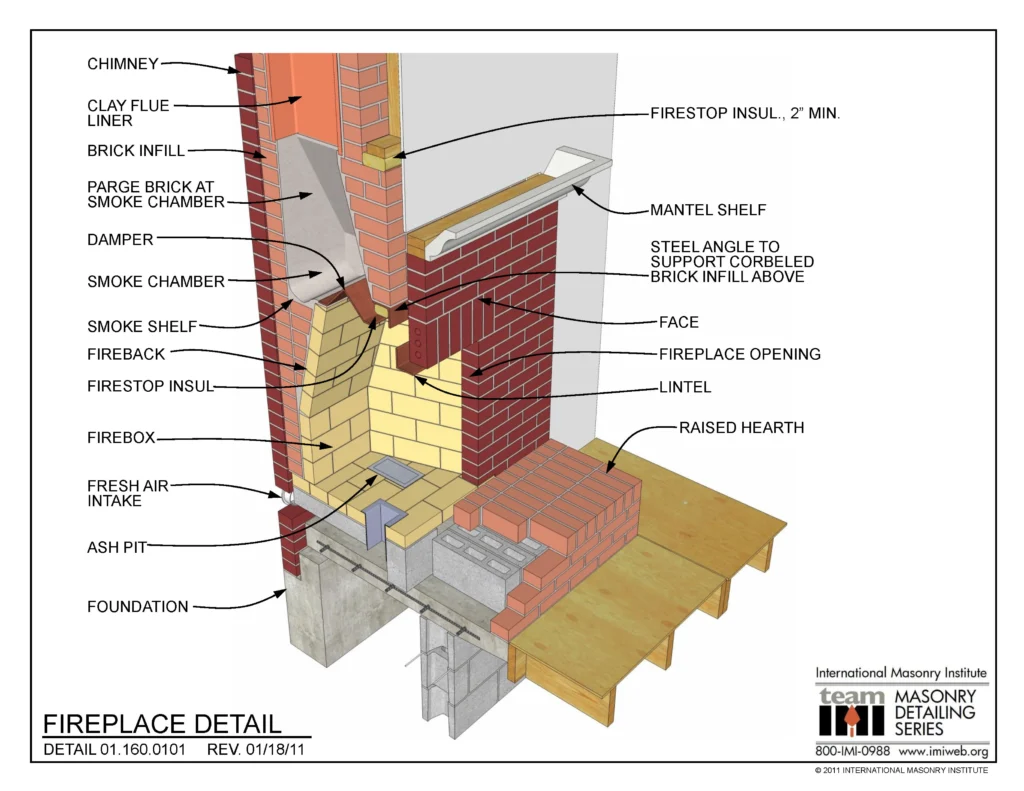
Image Source: imiweb.org
There are 13 essential components for every fireplace. Understanding each of them helps you maintain and construct an optimal fireplace for your needs.
Premium Pick
Ashley Hearth EPA Certified Pedestal Wood Burning Stove
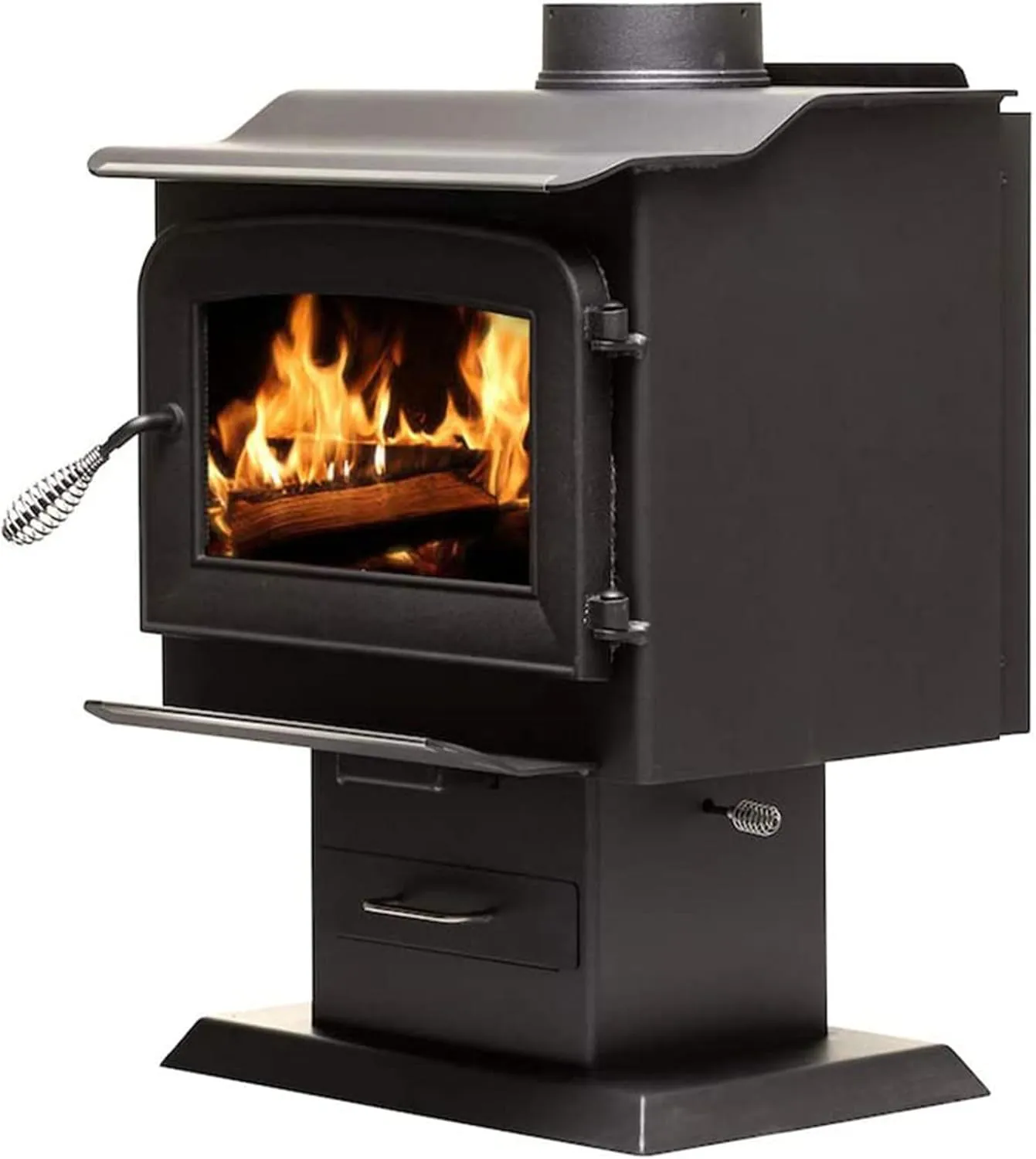
Premium Pick
Serenity 1,500 square ft. Heating Capability Pellet Stove
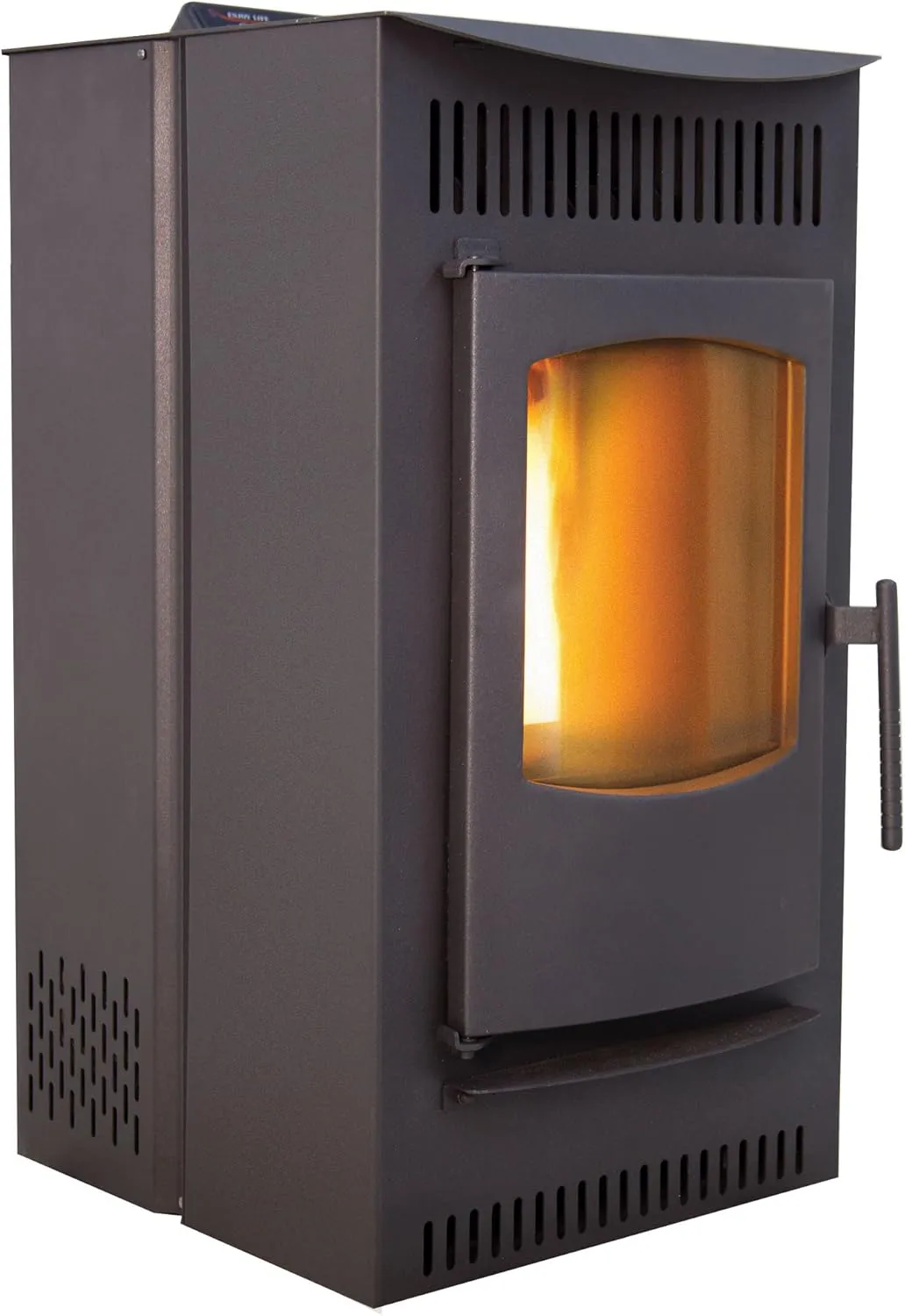
1. Foundation of A Fireplace
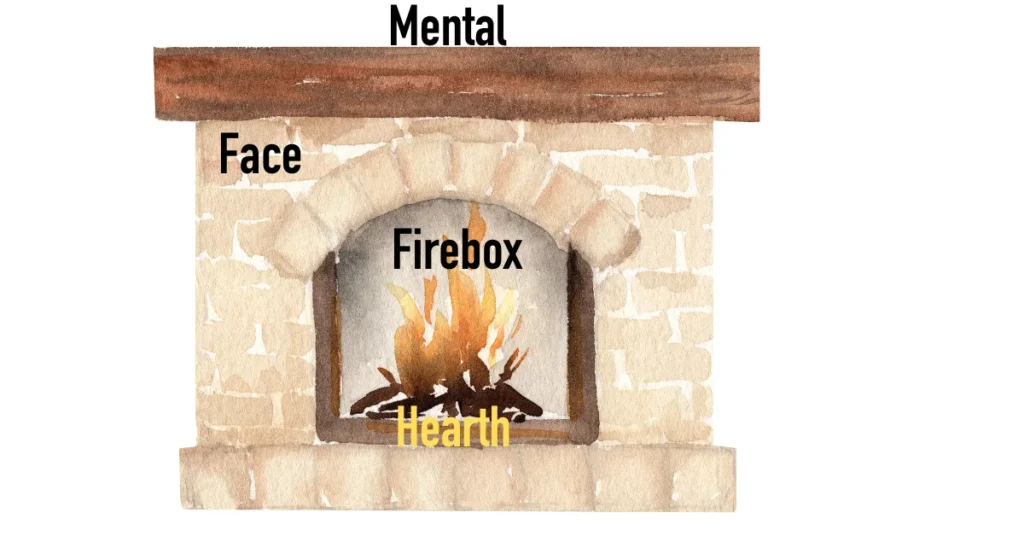
The foundation of any fireplace is built upon four essential components: the mantle, the firebox, the facing, and the hearth. Each of these elements plays a crucial role in the fireplace’s functionality and aesthetic appeal.
Mantle
The mantle is the shelf-like structure above the fireplace opening. It serves both a practical and decorative purpose. Functionally, the mantle provides a place to display decorative items such as family photos, artwork, or seasonal decorations.
It also deflects heat away from the wall above the fireplace, protecting it from damage. Aesthetically, the mantle is a focal point in the room, often serving as a decorative centerpiece that complements the overall design scheme.
Firebox
The firebox is the chamber where the fire is contained. It is typically made of fireproof materials such as firebrick or refractory concrete to withstand high temperatures.
The design of the firebox is crucial for efficient burning and heat distribution. Proper airflow is essential for a clean-burning fire, so the size and shape of the firebox must be carefully considered.
The firebox may feature a damper or other controls to regulate airflow and temperature.
Face
The facing, also known as the fireplace surround, is the decorative exterior surface that surrounds the firebox opening. It can be made from various materials, including stone, brick, tile, or wood.
The facing enhances the fireplace’s visual appeal and can be customized to suit the style of the room.
Some facings may include intricate designs or patterns, while others may have a more minimalist or modern appearance.
Hearth
The hearth is the area in front of the fireplace where the fire is contained. Traditionally, the hearth was made of stone or brick and extended into the room to protect the floor from sparks and embers.
Today, hearths may still be made of stone or brick, but they can also be constructed from other materials, such as tile or concrete.
In addition to providing a functional barrier, the hearth also serves as a decorative element, often featuring decorative accents or trim.
2. Ash Pit
A fireplace’s ash pit is crucial fireplace part in maintaining a clean and efficient heating system. Positioned below the fire grate, it acts as a receptacle for accumulating ash and other debris from the combustion process. This feature not only facilitates the removal of ash but also contributes to the overall safety and functionality of the fireplace.
One of the primary purposes of the ash pit is to prevent the build-up of ash and embers within the fireplace itself. As the fire burns, the ash falls through the openings in the grate and collects in the pit below. This helps maintain a clear path for air circulation, ensuring the fire burns efficiently and evenly.
Furthermore, the ash pit simplifies cleaning and maintaining the fireplace. Instead of manually removing ash from the firebox, homeowners can simply access the ash pit and dispose of the accumulated debris as needed. This saves time and effort and reduces the risk of accidental ash spills within the home.
The ash pit essential component of the fireplace can also serve as a valuable tool for monitoring the health of the fireplace.
3. Fresh Air Intake
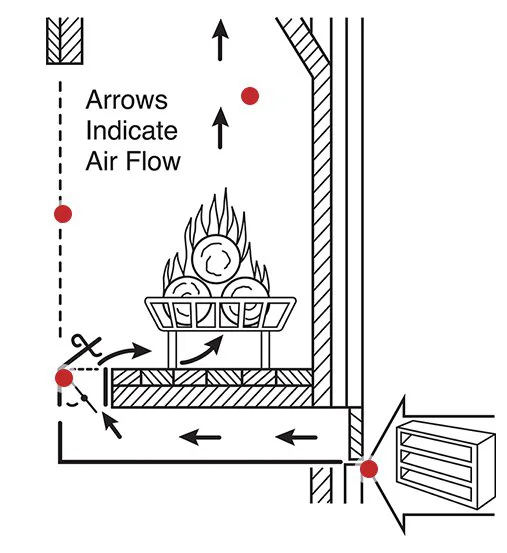
Image Source: dalsinmfg.com
The fresh air intake of a fireplace plays a crucial role in ensuring proper combustion and ventilation within the fireplace system.
The fresh air intake provides the fireplace with a direct outside air source for combustion. This is essential for indoor air quality by preventing the fireplace from drawing air from inside the house, which can lead to drafts and reduced efficiency.
The intake is typically located near the fireplace, often on the house’s exterior wall. It can be positioned at the base of the fireplace, on the sidewall, or even through the chimney chase.
Benefits:
- Improved efficiency: By drawing in outside air, the fireplace can burn more efficiently without competing for oxygen with other appliances or occupants inside the house.
- Reduced drafts: Using outside air for combustion helps prevent drafts and cold air infiltration, especially in tightly sealed homes.
- Enhanced safety: Proper ventilation reduces the risk of back-drafting, which can lead to the buildup of harmful gases like carbon monoxide inside the home.
4. Fire Box
The firebox is the heart of a fireplace, where the flames dance and warmth emanate. It’s the enclosed space where the fire burns, contained within the structure of the fireplace. Crafted from fire-resistant materials like brick, stone, or metal, the firebox ensures safety while providing an inviting ambience.
Its design influences the efficiency and aesthetics of the fireplace. A well-built firebox directs heat into the room while preventing smoke from escaping into the living space. Proper insulation and ventilation are crucial for optimal performance, ensuring the fire burns cleanly and efficiently.
In traditional fireplaces, the firebox is often lined with firebrick, a dense and durable material that withstands high temperatures. This lining protects the surrounding structure from heat damage and prolongs the fireplace’s lifespan.
Modern fireboxes may incorporate innovative features like air wash systems to keep the glass clean or adjustable dampers for controlling airflow and heat output. Some fireplaces even have removable ash pans or grates for easy cleaning and maintenance.
5. Lintel
The lintel of a fireplace plays a crucial role in supporting the structure above the fireplace’s opening. It serves as a horizontal beam that spans the width of the opening and helps distribute the weight of the masonry or stone above it.
Functionally, the lintel bears the load of the material above the fireplace opening, including the weight of the chimney stack or any masonry above it. Providing structural support prevents the weight from causing the fireplace opening to collapse inward. This is especially important in traditional masonry fireplaces where heavy materials like brick or stone are used.
The lintel helps to maintain the integrity of the fireplace by ensuring that the heat and flames generated within the firebox do not compromise the structural stability of the surrounding masonry. It acts as a barrier, protecting the masonry from the fire’s intense heat.
6. Firestop Insul
Firestop Insul is an insulation material designed for use in and around fireplaces. It is formulated to provide thermal insulation and fire protection properties, making it essential for ensuring the safety and efficiency of fireplace installations.
This specialized insulation helps prevent heat transfer from the fireplace to adjacent combustible materials, reducing the risk of fire hazards. It also helps to improve the overall energy efficiency of the fireplace by minimizing heat loss through the surrounding walls.
Firestop Insul fireplace part is typically made from non-combustible materials such as mineral wool, ceramic fibers, or refractory materials. These materials can withstand high temperatures without igniting or releasing harmful gases, making them ideal for fire-rated applications.
7. Fireback
The fireback is an essential fireplace component, serving both functional and aesthetic purposes. Positioned against the fireplace’s back wall, the fireback protects the masonry from the intense heat generated by the fire, preventing damage and increasing the structure’s longevity.
Traditionally made of cast iron, firebacks also enhance the fireplace’s efficiency by reflecting heat into the room. This not only helps to keep the room warmer but also reduces the amount of fuel needed to maintain a comfortable temperature.
Fireplace fireback is often decorated with intricate designs or motifs, adding a touch of elegance and charm to the fireplace. These designs can range from simple patterns to elaborate scenes, reflecting the tastes and preferences of the homeowner.
8. Smoke Shelf
The smoke shelf is a crucial component of a traditional fireplace, positioned just above the firebox and below the chimney throat. Its primary function is preventing downdrafts and directing smoke and gases into the chimney. This shelf helps improve the efficiency and safety of the fireplace by creating a barrier between the fire and the chimney opening.
Typically made of non-combustible materials such as masonry or metal, the smoke shelf is designed to collect any debris or soot that may fall from the chimney. This accumulation helps to prevent blockages in the chimney flue, which could otherwise lead to restricted airflow or chimney fires.
The smoke shelf also plays a role in promoting proper draft within the chimney. Providing a smooth transition for the smoke and gases to flow from the firebox into the chimney reduces the likelihood of smoke spillage into the room. It ensures that combustion byproducts are efficiently vented to the exterior.
In addition to its functional aspects, the smoke shelf can also be a design feature of the fireplace. It may be incorporated into the overall aesthetic of the fireplace, with decorative elements such as corbels or molding enhancing its appearance.
9. Damper
A fireplace damper is a crucial component of a traditional fireplace system, serving as a control mechanism for airflow and heat retention. It’s typically located within the chimney, just above the firebox, and can be opened or closed to regulate the draft and airflow into the fireplace.
The primary function of a fireplace damper is to control the flow of air and smoke up and out of the chimney. When the damper is open, air can freely circulate through the fireplace, allowing for proper combustion and efficient burning of wood or other fuels. When closed, it prevents heat loss and blocks downdrafts from the chimney.
10. Parge Brick at Smoke Chamber
The Parge Brick of the fireplace serves an essential function within the smoke chamber of a fireplace. This component is typically made of fire-resistant brick or refractory mortar. Its primary purpose is to smooth and seal the inner surfaces of the smoke chamber.
The Parge Brick helps to guide the flow of smoke upwards and out of the chimney by creating a smooth surface that encourages the smoke to travel in the desired direction.
By covering the inner walls of the smoke chamber, the Parge Brick helps to insulate the surrounding structure from the intense heat generated by the fire. This insulation protects adjacent building materials from damage due to prolonged exposure to high temperatures.
Creosote is a byproduct of burning wood that can accumulate within the chimney over time. The Parge Brick’s smooth surface helps minimize creosote buildup by reducing the likelihood of condensation and allowing for easier cleaning.
In addition to its functional role, the Parge Brick provides structural support to the smoke chamber. It helps to reinforce the walls and maintain the integrity of the fireplace system.
A well-designed smoke chamber with an adequately installed Parge Brick can improve the overall draft efficiency of the fireplace.
This ensures that smoke is effectively drawn out of the firebox and expelled through the chimney, reducing the risk of backdrafts and improving the fireplace’s performance.
11. Brick Infill
Brick infill, also known as firebrick or refractory brick, forms the inner lining of a fireplace, creating a durable and heat-resistant surface that withstands high temperatures. These specialized bricks are designed to endure intense heat without cracking or deteriorating, making them essential for the safe operation of the fireplace.
Crafted from dense, fireproof materials such as clay and shale, firebricks offer superior thermal insulation, effectively containing the heat generated within the fireplace while preventing damage to the surrounding structure. Their smooth surface and uniform shape provide a visually appealing backdrop for the dancing flames, enhancing the aesthetic appeal of the fireplace.
Installed in a tightly fitted pattern, the brick infill forms a protective barrier between the fire and the fireplace’s walls, reducing the risk of heat transfer and potential damage to combustible materials. The bricks’ thermal mass also helps regulate and distribute heat evenly throughout the room, ensuring a cosy and comfortable environment.
Beyond their functional benefits, brick infill adds a touch of traditional charm and rustic elegance to any fireplace, complementing various architectural styles from classic to contemporary. Whether used in a traditional wood-burning fireplace or a modern gas insert, firebricks contribute to the overall ambience and character of the space.
12. Clay Flu Liner
A clay flue liner is an essential component of a fireplace or chimney system, serving several vital functions. Made from ceramic clay or terracotta, these liners are cylindrical tubes installed inside the chimney to contain and direct the flow of combustion gases and smoke safely outside the home.
The primary purpose of a flue liner is to protect the chimney structure and the surrounding areas from the heat and corrosive byproducts of combustion. Without a liner, the chimney walls could suffer damage over time, leading to structural issues and potential safety hazards.
Clay flue liners are chosen for their ability to withstand high temperatures. During the combustion process, intense heat is generated, and the liner must endure this heat without cracking or deteriorating.
13. Chimney
The primary function of the chimney is to vent smoke and other combustion byproducts out of the house. As wood or other fuels burn in the fireplace, they release gases and particles that must be safely removed from the living space. The chimney provides a pathway for this smoke to exit the home.
The design of the chimney, including its height and diameter, contributes to the creation of a draft. A draft is a flow of air that moves upwards through the chimney, pulling smoke and gases out of the fireplace. This draft is essential for proper combustion and prevents smoke from billowing back into the room.
Chimneys also help control moisture levels inside the home by allowing water vapor produced during combustion to escape. This moisture can accumulate on walls and ceilings without proper venting, leading to mold and mildew growth.
An adequately maintained chimney reduces the risk of chimney fires by removing combustible residues such as creosote. Creosote buildup is a byproduct of burning wood and can ignite if not removed regularly. The chimney provides a safe pathway for these residues to exit the home.
Chimneys can also help regulate indoor temperatures by allowing excess heat to escape during warmer months. Opening a chimney damper can create a natural ventilation system, allowing hot air to rise and exit the home and helping to cool the interior.
Related Posts:
Frequently Asked Questions
How often should I clean my fireplace?
Regular fireplace maintenance, including cleaning, should be performed at least once a year, ideally before the start of the heating season. However, if you notice excessive creosote or other debris buildup, more frequent cleaning may be necessary.
Can I install a fireplace in my home if I don’t already have one?
Yes, installing a fireplace in your home is possible, even if you don’t have an existing chimney or firebox. Electric or ventless gas fireplaces offer installation flexibility and can be easily incorporated into various spaces.
What are some signs that my fireplace needs repairs?
Common signs that your fireplace may require repairs include smoke backing into the room, visible cracks or damage to the firebox or chimney, or difficulty maintaining a consistent flame. If you notice any of these issues, it’s essential to have your fireplace inspected by a professional.
How can I improve the efficiency of my fireplace?
Several measures can improve the efficiency of your fireplace, such as using seasoned firewood, ensuring proper airflow with a clean flue and damper, and installing a fireplace insert or glass doors to minimize heat loss.
Are there any safety precautions I should take when using my fireplace?
Yes, it’s essential to follow safety guidelines when using your fireplace to reduce the risk of accidents or injuries. Keep flammable materials away from the hearth, use a fireplace screen to contain sparks, and never leave a fire unattended.
Can I convert my wood-burning fireplace to gas?
It’s possible to convert a wood-burning fireplace to gas by installing a gas insert or gas log set. This conversion offers the convenience of gas fuel without needing wood storage or cleanup.
Affiliate Disclosure: Fireplaceadviser.com is a participant in the Amazon Services LLC Associates Program. We may earn a commission when you click on certain links on this site and purchase.

Hello!! I am Jamal Khan. I often fix my home electric heaters and gas stove problems and research the common issues in the heating units to improve my knowledge and expertise. The aim of establishing fireplaceadviser.com is to share my expertise and knowledge with my audience.












